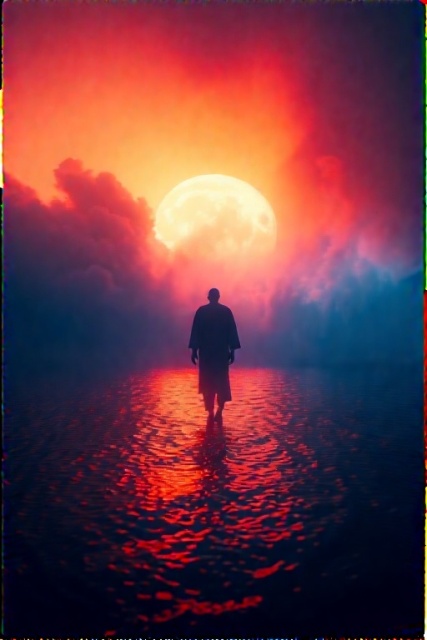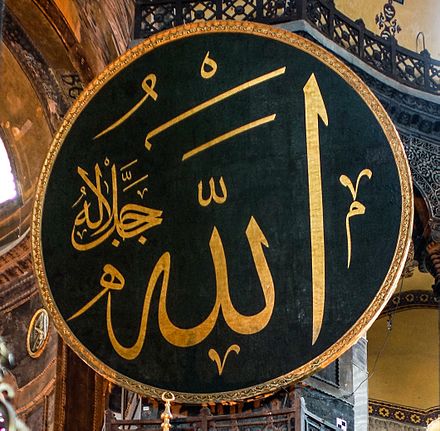“Say, ‘He is the [One] Able to send upon you affliction from above you or from beneath your feet or to confuse you in factions and make you taste the violence of one another.'” (Quran 6:65)
In this second installment of our series, we dig into the Major Signs of the Hour (ʿAlāmāt al-Sāʿa al-Kubrā), the events preceding the Day of Judgment. These signs, foretold in explicit Quranic verses and authenticated hadiths, serve as divine markers of humanity’s final trial. Grounded in mainstream scholarship, this exploration balances theological rigor with practical guidance for Muslims navigating an era of unprecedented global challenges.
The Major Signs: Definition and Sequence
Prophetic Framework of the Final Ten Signs
The Prophet Muhammad ﷺ outlined:
“The Hour will not be established until you see ten signs: the smoke; the Dajjal; the Beast; the sun rising from the west; the descent of Jesus, son of Mary; Gog and Magog; three landslides-one in the east, one in the west, and one in Arabia; and finally, a fire emerging from Yemen to drive people to their gathering place.” (Sahih Muslim 2901)
Key Points of Consensus Among Scholars:
- Irreversible Nature: Once these signs manifest, repentance’s door closes.
- Chronological Order: Disagreement exists on sequence, but most agree the first sign is the emergence of the Dajjal (False Messiah).
- Universal Impact: These events affect all humanity, transcending regional boundaries.
In-Depth Analysis of Select Major Signs
1. The Emergence of the Dajjal (False Messiah)
Quranic Foundation:
While the Quran does not explicitly name the Dajjal, it warns against false claimants to divinity:
“And whoever of them says, ‘I am a god besides Him’-We will recompense him with Hell.” (Quran 21:29)
Hadith Details:
- Description: The Dajjal will be a one-eyed man claiming lordship, accompanied by supernatural feats like reviving the dead.
- Duration: His reign lasts 40 days-one day like a year, another like a month, the rest normal. (Sahih Muslim 2937)
- Protection: Reciting Surah Al-Kahf’s first ten verses offers divine safeguard. (Sahih Muslim 2937)
Contemporary Parallels:
- Rise of AI-generated deepfakes mimicking “miracles.”
- Cult leaders exploiting crises to claim messianic status.
2. The Descent of Isa (Jesus) (PBUH)
Quranic Affirmation:
“And indeed, Jesus is a knowledge of the Hour.” (Quran 43:61)
Prophetic Narratives:
- Jesus (PBUH) will descend at Damascus’ White Minaret, break the cross, kill the Dajjal, and establish justice. (Sahih Muslim 155)
- He will rule by Islamic law, marry, and die a natural death.
Theological Debates:
- Timing: Majority view places his return after the Dajjal’s emergence.
- Role: Corrects Christian theological errors while affirming Muhammad’s ﷺ final prophethood.
3. Gog and Magog (Ya’juj wa Ma’juj)
Quranic Account:
“Until when Gog and Magog are unleashed and swarm down from every slope.” (Quran 21:96)
Hadith Context:
- They will drink dry every water source and terrorize humanity until Jesus (PBUH) prays for their destruction. (Sahih Muslim 2937)
- Their eradication precedes an era of unprecedented peace.
Modern Speculations:
- Some scholars link them to hyper-industrialized societies causing ecological collapse.
- Others view them as literal tribes hidden since Dhul-Qarnayn’s era.
Theological Debates and Scholarly Perspectives
1. Literal vs. Symbolic Interpretations
- Mainstream View: Accepts signs as literal events.
- Alternative Perspectives:
- Ibn Khaldun: Argued some descriptions use metaphorical language suited to 7th-century understanding.
- Modernists: Interpret “smoke” (Quran 44:10) as nuclear fallout or pollution.
2. The Order of Signs
- Majority Opinion: Based on Hadith, sequence begins with Dajjal.
- Minority View (Ibn Hajar): Suggests the Beast emerges first per Quran 27:82.
Contemporary Relevance: Preparing for the Inevitable
1. Spiritual Readiness
- Daily Practices:
- Surah Al-Kahf Recitation: Weekly reading to guard against Dajjal’s fitna.
- Dua for Protection: “Allahumma inni a’udhu bika min ‘adhabi jahannam…” (Seeking refuge from Hellfire).
2. Community Resilience
- Mosques as Safe Havens: Revive the Prophet’s ﷺ model of mosques serving as crisis centers.
- Interfaith Dialogue: Educate non-Muslims about Islamic eschatology to counter anti-Dajjal hysteria.
3. Ethical Technology Use
- AI Governance: Establish Islamic ethics boards for emerging tech, referencing the Prophet’s ﷺ warning: “A time will come when nothing will remain of Islam except its name.” (Sunan Abu Dawud 4256)
Addressing Common Reader Questions
1. Will Muslims Suffer During These Trials?
Yes, but their faith offers protection. The Prophet ﷺ said: “Whoever memorizes ten verses from Surah Al-Kahf will be shielded from the Dajjal.” (Sahih Muslim 809)
2. Can We Delay These Signs Through Prayer?
No. The Prophet ﷺ clarified: “If Allah decrees an affliction, no prayer can avert it.” (Sahih Bukhari 6616) However, sincere supplication alters divine decree’s form.
3. How Should We Treat Non-Muslims During These Times?
The Quranic principle applies:
“Allah does not forbid you from those who do not fight you.” (Quran 60:8)
Navigating the Final Storm
Key Takeaways:
- Major signs are divine mercy, offering final chances for repentance.
- Preparation requires both individual piety and communal solidarity.
Quranic Assurance:
“Allah has promised those who believe and do righteous deeds that He will grant them succession on earth.” (Quran 24:55)
In Part 3, we explore the cosmic upheavals: the sun’s rise from the west and the Beast of the Earth, In Sha Allah.







